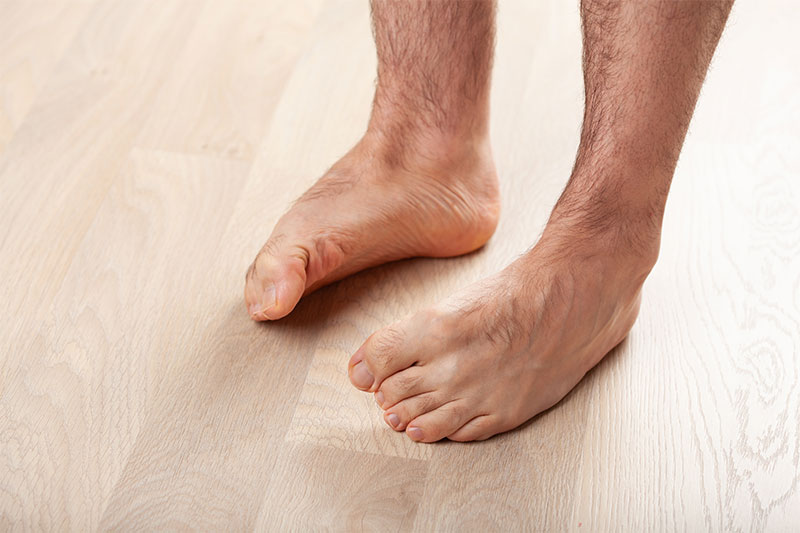Parkinson’s disease or PD is not a condition that many understand and what it is, it’s a neurological condition that involves movement as it can affect the entire body. It can cause the muscles to stiffen up, cause slow movement, and it can cause tremors as well as muscle contractions. If you are tremoring, that is a sign that you could have PD but that also can be a cause for many other conditions. However, there is one sign of PD that no one mentions often enough to look for and that has to do with your feet.

How Your Feet Can Indicate That You Could Have PD
If your feet are clenched or your toes are curled, that is a sign that you could have PD. That is because the muscles are contracting on an involuntary basis which is causing your feet to clench up which will affect your toes. However, PD can also affect your posture and it can cause you to stoop which will have an effect on your feet. It is that your body works to compensate for its weight which is why it has such an effect on the feet as well. That is also what can cause the toes to curl up. And the issue is once your toes are in that clawed position, they cannot uncurl themselves correctly and that causes a problem with causing you to find a balance.
What Should You Do When You Notice That Your Toes Are Curled?
If you notice that your toes are curled up and you cannot flatten them then you need to talk to your doctor, and you may be referred to a podiatrist. They can tell you whether you have mallet toes, hammertoes, or claw toes as they are three different medical conditions as only medical professionals can distinguish. The thing is with hammertoes, they are similar to the clenched toes that PD can cause because it causes a bend of the toes that are not natural and can cause the middle toe to not be able to flex at all. Those conditions cause the foot to become deformed and affect the toe movement. Always call a doctor if this is what you notice about your toes so you can be on the path to getting a proper diagnosis, even if it turns out you do not have PD.
What Other Signs Can Your Feet Show That You Have PD?
If you have those curled toes, or mallet or hammertoes, then you will want to also note if you have pain as you attempt to move them. You also will want to note if you have corns, redness, swelling, or calluses. If your toes are still able to flex but are stiff, then you are likely quite early on in the stage of PD. However, if they are a lot more rigid than that, then you are at a more advanced stage even if you are not having any other marked symptoms. Though you could be standing in a stooped posture without even realizing it. That will affect your feet as was mentioned before.
You will want to get the issue resolved early on because even though there is no cure for PD, there are treatments that can help you manage the condition. There are anti-inflammatory drugs as well as pain medication that can help, but if none of those work, there is also surgery which will be the last resort. You may want to wear different shoes that can support your feet better and you can also have orthotics prescribed by a podiatrist. The key is as well to get the PD caught early on so you can get the interventions you need to not let the condition take over so quickly.


